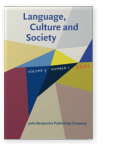Vol. 3:1 (2021) ► pp.58–81
The making of “deep language” in the Philippines
This analysis interrogates one of the most highly recognizable, but little understood metalinguistic descriptors of language in the contemporary Philippine linguistic scene: the concept of “deep language.” Here, “deep language” is explored as a complex, polysemous term generally used to describe homegrown conceptualizations of “pure” forms of Philippine-type languages and speakers. The contemporary understanding of “deep language” in the Philippines is theorized to have been informed by a complex combination of folk and academic discourses that have percolated throughout shared ideologies and conceptualizations of language since national independence at mid-20th century. The metric of “depth” in the analysis of language is shown to function centrally as a conceptual metaphor that enables everyday speakers to theorize person-types and the passage of time in a folk chronotope reckoned through the sign of language.
Article outline
- Introduction
- Foundations
- Framings from speakers: “depth” as a multifaceted metalinguistic analytic
- Factor 1.Depth of knowledge
- Factor 2.Depth of geography
- Factor 3.Depth of feeling
- Complex constructions: English and Taglish
- Reconciling time and person-types through the analytic of “depth”
- Time
- Person-types
- Conclusions
- Notes
-
References
